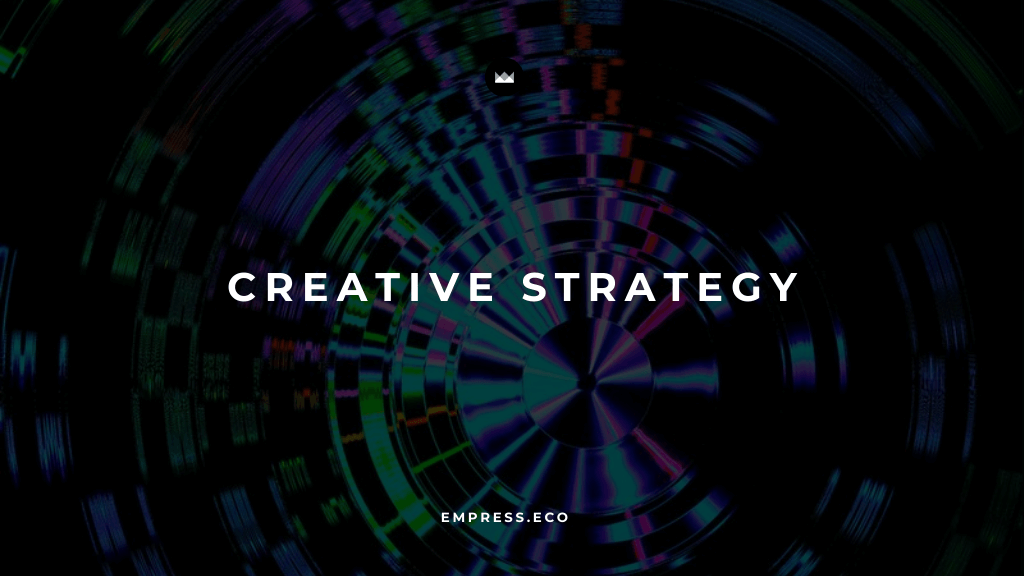
Why Creative Strategy is Key to Sustainable Growth in 2024
Leveraging strategic creativity to ensure long-term success and business resilience.
Table of Contents
In an increasingly competitive and dynamic business environment, leveraging creative strategy has become essential for sustainable growth and long-term success. By integrating strategic creativity into business practices, companies can foster innovation, resilience, and adaptability. This blog explores why creative strategy is crucial for sustainable growth in 2024 and provides actionable steps to harness its potential.
Understanding Creative Strategy
A creative strategy is a comprehensive plan that outlines how a business will achieve its goals through innovative and creative approaches. It serves as a blueprint for aligning creative efforts with business objectives, ensuring that every action taken contributes to overall growth and success. This involves using creativity not just in marketing and product development but across all aspects of the business, from operations to customer engagement.
Benefits of Creative Strategy for Sustainable Growth
Enhanced Innovation and Adaptability
Creative strategy encourages businesses to think outside the box and explore new ideas and solutions. This fosters a culture of innovation, allowing companies to adapt to changing market conditions and stay ahead of competitors. For example, companies like Google and Apple have consistently leveraged creative strategies to innovate and adapt, maintaining their competitive edge in rapidly evolving markets.
Improved Brand Differentiation
In a crowded market, a well-defined creative strategy helps brands stand out by highlighting their unique value propositions. By leveraging creativity, businesses can create distinctive and memorable brand experiences that resonate with their target audience. This differentiation is crucial for attracting and retaining customers, as it provides a compelling reason for them to choose your brand over others.
Increased Customer Engagement and Loyalty
Creative strategies enable businesses to develop compelling and relevant messaging that connects with customers on an emotional level. This fosters deeper engagement and builds long-term loyalty, as customers feel more connected to the brand. Effective storytelling, for instance, can transform a brand’s narrative and foster a strong emotional bond with the audience, enhancing overall customer loyalty.
Efficient Resource Management
A creative strategy helps businesses identify innovative ways to utilize resources more effectively. By prioritizing creative initiatives that align with business goals, companies can optimize resource allocation and achieve maximum results. This includes leveraging technology to streamline processes and reduce costs, thereby improving overall efficiency.
Key Components of an Effective Creative Strategy
Setting Clear Objectives
Define specific, measurable, achievable, relevant, and time-bound (SMART) goals for your creative strategy. These objectives should align with your overall business goals and provide a clear direction for your creative efforts. For example, setting a goal to increase website traffic by 30% in six months can provide a clear target and help focus creative efforts on achieving this outcome.
Examples of Objectives:
- Increase website traffic by 30% in six months.
- Boost social media engagement by 25% in three months.
- Generate 100 new leads per month through creative marketing campaigns.
Understanding Your Audience
Conduct thorough research to understand your target audience’s demographics, preferences, and behaviors. Creating detailed buyer personas can help tailor your creative efforts to meet their needs and interests. Understanding your audience is crucial for creating relevant and engaging content that resonates and drives action.
Steps to Understand Your Audience:
- Surveys and Interviews: Gather direct feedback from your audience.
- Analytics: Use tools like Google Analytics and social media insights.
- Competitor Analysis: Study your competitors’ strategies to identify gaps and opportunities.
Developing a Comprehensive Creative Plan
A comprehensive creative plan outlines the strategies and tactics you will use to achieve your objectives. It should include a clear vision, creative principles, and a roadmap for execution. This plan serves as a guide for all creative activities, ensuring that they are aligned with overall business goals and are effectively executed.
Elements of a Creative Plan:
- Vision: Define the long-term vision for your creative efforts.
- Creative Principles: Establish guiding principles that reflect your brand values and goals.
- Roadmap: Create a detailed plan that outlines the steps needed to achieve your creative objectives.
Leveraging Technology and Innovation
Incorporate advanced technologies like AI, machine learning, and AR/VR to enhance your creative efforts. These technologies can streamline processes, provide valuable insights, and create immersive experiences that captivate your audience. For instance, AI can be used to analyze customer data and generate personalized marketing campaigns, while AR/VR can create engaging, immersive experiences that enhance customer engagement.
Examples of Technology Integration:
- AI-Powered Tools: Use AI to analyze data and generate creative ideas.
- AR/VR Experiences: Create immersive brand experiences using augmented and virtual reality.
Overcoming Challenges in Creative Strategy Implementation
Balancing Creativity and Strategy
While creativity is essential, it must be balanced with strategic objectives. Ensure that creative efforts align with business goals and contribute to measurable outcomes. This involves integrating creativity into the strategic planning process and ensuring that creative initiatives are driven by clear, strategic goals.
Ensuring Flexibility and Adaptability
The business environment is constantly changing, and creative strategies must be flexible and adaptable. Regularly review and adjust your creative plan to respond to new trends and market dynamics. This requires a continuous monitoring process and the ability to pivot quickly in response to changing conditions.
Measuring Impact and ROI
Evaluating the success of creative efforts requires clear metrics and objectives. Track key performance indicators (KPIs) such as engagement, conversion rates, and customer feedback to assess the impact and refine your strategy. This involves setting up a robust measurement framework and using analytics tools to gather and analyze data.
Case Studies: Successful Creative Strategies for Sustainable Growth
Apple’s Innovation-Driven Growth
Apple’s success is largely attributed to its strategic alignment of creativity and business goals. By focusing on user-centric design and innovative products, Apple has created a strong brand identity and sustained competitive advantage. Their continuous investment in creative strategies has allowed them to remain at the forefront of the technology industry.
Nike’s “Just Do It” Campaign
Nike’s iconic “Just Do It” campaign successfully utilized creative storytelling and multi-channel strategies to reach a global audience. The consistent messaging and engaging content led to a significant increase in brand awareness and sales. This campaign is a prime example of how strategic creativity can drive substantial business results.
Conclusion
Creative strategy is essential for sustainable growth and long-term success in 2024. By setting clear objectives, understanding your audience, developing a comprehensive creative plan, and leveraging technology and innovation, businesses can harness the power of strategic creativity to drive growth and resilience.
As the business landscape continues to evolve, embracing creative strategy will be crucial for maintaining a competitive edge and achieving sustained success. Start integrating creative strategy into your business practices today to unlock new levels of innovation and impact.
Empress Newsletter
Join the newsletter to receive the latest updates in your inbox.



